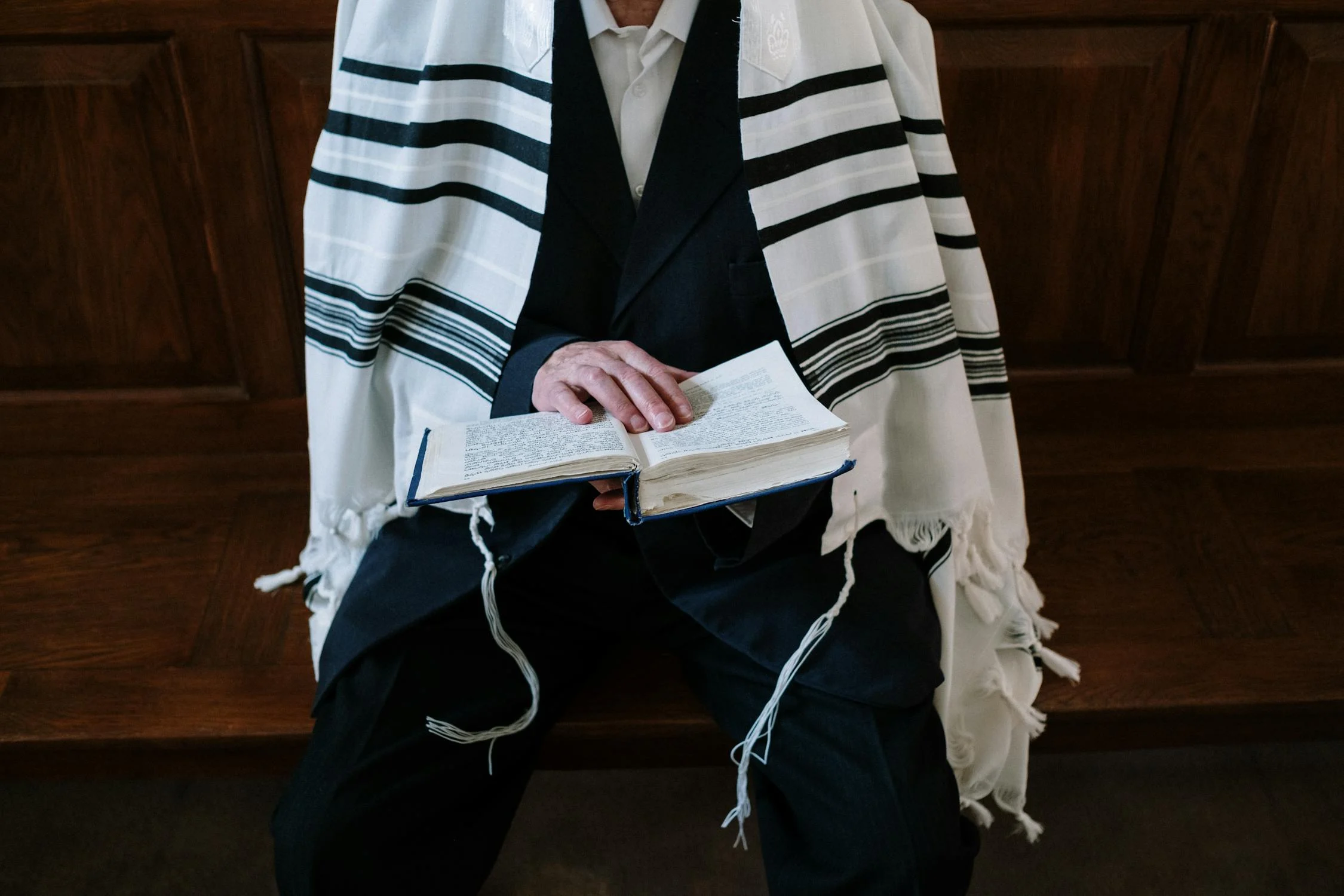People of many different faiths have practiced meditation for thousands of years. For that matter, the art of meditating doesn’t have to be tied to a particular religious practice either. Simply put, individuals use meditation to seek peace with themselves and the world. No single religious tradition owns a corner on the market for this ancient practice, and many noted benefits of meditation exist.
For example, regular mindfulness-based stress reduction supports both mental and physical health. Studies point to the regular practice of meditation helping people better deal with anxiety disorders and other mental health conditions. Research shows that different forms of meditation also yield physical improvements for those suffering from high blood pressure issues.
Meditation doesn’t just belong to a select few living on some isolated mountaintop. Many choose to incorporate meditation as a daily practice. Contemplative practice is just one example of meditation from the Buddhist tradition. But people of various faiths can and do take advantage of meditating, whether as a novice, an expert, or anywhere in between. No matter where one falls on the scale of experience with meditation, that doesn’t prohibit one from pursuing it. Mindful meditation is a process.
Meditation in Buddhism
Buddhists believe peaceful enlightenment comes through following certain mindfulness practices. Ancient Eastern approaches include skills like stillness of the mind, mental clarity, and letting go of the self. A body scan technique can help increase relaxation throughout the whole body. The teacher uses a calm, soft tone to lead the practitioner through this technique, with attention paid to each body area through a systematic review. Buddhist meditation exercises also tend to ask one to start with an empty mind and simply exist in the present moment.
Within Buddhism, there are many different types of meditation practice. Some Buddhists practice metta, or loving-kindness meditation, which focuses the mind on sending loving energy to the self, others, and the world. The goal focuses on creating more peace and harmony in the world and in a person’s life. Those who practice Nichiren Buddhism focus their meditation on a mantra (brief saying) such as Nam myoho renge kyo, or “Let me be one with the stream.” This type of meditation primarily seeks to bring peace, calmness, and mental clarity to the practitioner.

Embodied Meditation Practices in Buddhist Traditions
Buddhist traditions also incorporate embodied meditation practices like yoga, tai chi, and walking meditation. These aim to create internal peace by engaging the entire body with a focus that includes breathing techniques. The word yoga comes from the Sanskrit word yuj, which means “to unite.” Yuj signifies joining with the oneness or flow of the universe. By moving the body and using breath intentionally, the yoga practitioner seeks to create a feeling of peace and well-being that spills into their daily life.
Practitioners of tai chi seek to improve the flow of qi or life force energy. These followers believe this energy already exists in human bodies. By moving and breathing intentionally, practitioners experience this flowing or unified force within and surrounding them. Walking meditation can occur in a temple, a walking labyrinth, or in a quiet place near nature. It allows people to experience inner peace by focusing on the repetitive mechanics of walking and taking controlled breaths.
Meditation does not belong solely to Buddhism, or other Eastern traditions. Many cultures and religions incorporate meditative practices with deep breath techniques in their spiritual disciplines. Spiritual meditation can be embodied by lying flat, sitting, walking, or standing. The form of meditation one chooses to use need not be prescriptive.
The Islamic Tradition
The daily prayers (salaat) are an act of meditation in the Muslim faith. The practicing Muslim takes intentional breaks during the day to quiet the mind and focus the thoughts, breath, and body on Allah. To that end, meditation for a Muslim requires surrendering to a greater power. Regular pauses throughout the day enable one to be mindful of one’s source.
Some Muslims and Sufis practice dhikr, the ongoing repetition of words or phrases that invoke Allah. It’s comparable to the use of mantras in Buddhism, or similar practices found in mystical Jewish meditation. Through Dhikr the practitioner uses words, phrases, and tones to calm a busy mind and thus access a space of inner calm and connected peace. Many also pair this mantra meditation with physical movements or postures that engage the entire body in meditative practice.
The Jewish Tradition
Jewish mystics suggest we may find oneness with God or join the universal stream of consciousness and “God-knowing” by using different combinations of Hebrew letters as mantras to invoke the names of God. Jewish meditation can also involve recitation of the Shema or other daily prayers with attention to breathing, tone, and posture. A practitioner uses familiar words and prayers to anchor one’s thoughts and clear any “mind noise.” Jewish followers commonly use prayers found in the Torah to enter a meditative state.

In the Christian Tradition
In Christianity, worshipers often practice meditation during times of prayer. Christians also meditate through song, verbal recitation of sacred texts, focused contemplation of scripture, or personal prayer conversations with Jesus, Mary, or any of the saints. Misconceptions about meditation among Christians often revolve around a perceived connection to Buddhism or New Age spirituality. Even so, meditative practices have a long history in contemplative Christian traditions.
In recent decades, prominent Christian teachers like Richard Foster and Dallas Willard have sought to reintroduce practices associated with the desert fathers and monastic orders. In writing about spiritual formation and the practice of spiritual disciplines, both Foster and Willard list meditation as one of the “inward disciplines,” along with prayer, fasting, and Bible study.
Meditation in the Bible
Many Christians contrast the Eastern understanding of meditation as seeking oneness or striving to empty the mind by defining meditation as deep contemplation in pursuit of a greater understanding of God and His ways. Christians of this mindset argue that this is what a biblical approach to meditation means. Bible verses like Psalm 104:34 indicate that meditation can be pleasing to God, and Psalm 49:3 connects meditation to wisdom and understanding. The Bible has many references to meditation. Both Joshua and David meditate on the law (Joshua 1:8 & Psalm 119:97), for example. The Psalms feature many references to meditating on God’s words, works, and character (e.g., Psalm 143:5, Psalm 119:27, Psalm 119:148, Psalm 48:9).
In the New Testament, Paul admonishes Timothy not to neglect his teachings in 1 Timothy 4:15, and the KJV translates it to say “meditate” on his teachings. Similarly, Philippians 4:8 instructs Christians to “think on” things that are good. These passages give more support to the concept that meditation involves deep contemplation in pursuit of God.
In Luke 17:21 Jesus says, “the Kingdom of God is among you.” Some sects of Christianity interpret this to mean we all have the kingdom of God within us and are one with the connected stream of the universe. Contemplatives believe we may access that stream at any time by tapping into the teaching of Luke 17:21, seeking peace not in the world or even in heaven, but within ourselves.

Mindfulness Movement
In the US, hundreds of mindfulness leaders, authors, and apps now offer guidance in daily meditation practice. CEOs, healthcare providers, and teachers are being trained in mindfulness and contemplative practice. The historical American cultural model of work prizes efficiency and productivity, which also results in chronic pain, substance use disorders, and heart disease. The mindfulness movement seeks to help people focus inward to find internal peace amidst the constant stressors of modern life. Most workers can’t afford to retire or to spend hours meditating every day. However, everyone can carve out a few minutes of daily mindfulness practice that allows them to step away from their psychological stresses and burdens. People who integrate meditation techniques into daily life gain a greater sense of peace.
In recent decades, the mindfulness movement has grown in popularity and accessibility. This brings meditation and peace-seeking practices to everyone, regardless of their religious or spiritual identities. Science has proven the positive effects on brain structure with just a few regular minutes of meditation. The mindfulness movement is a secular model for chronic stress that seeks to train individuals and groups to quiet the mind intentionally, focus on breathing, and perceive one’s thoughts without judgment or engagement.
Accessible to Everyone, Anytime, Anywhere
Chanting, praying, or intoning words and sounds in a communal setting can focus and intensify the meditative practice. The atmosphere in a mosque during dhikr, a synagogue during the recitation of the kol nidre on Yom Kippur, a Buddhist temple where dozens are chanting the Nam Myoho Renge Kyo, and a church service where the Lord’s Prayer is being recited in unison are all powerful expressions of unity with mantra meditation and sound. The intentions and practices of a group can enhance the spiritual experience for all individuals involved.
Many have tended to mentally relegate the practice of meditation as something that only solitary monks do. Others have traditionally seen the idea of meditation as falling outside their preferred religious or spiritual practice. But opinions are changing. There is a growing understanding that meditation is accessible to everyone. Whenever someone intentionally focuses on a thought, word, movement, or peaceful activity, that person can be said to be meditating. A person can meditate while sitting down, standing up, walking, moving, working, painting, cooking, playing music, holding children, or doing any activity that helps them be more mindful and contemplative. Whenever someone taps their source of inner peace, they are meditating, regardless of meditation style or approach.
What do you think? Please share your thoughts below.
Too often, people answer faith questions with dogmatic certitude and neglect the historic diversity and complexity of Christian ideas. The Questions Project is a resource that responds to questions about faith, history, and scripture in a way that honors the historical diversity and complexity of Christian thought. But this is a work in process, and we need your help. Please provide feedback. Tell us what you liked, what we missed, and how we can improve our responses. Please keep all comments kind or risk deletion.








Learning to listen to God requires some form of centering prayer. Learning to slow down our pace and stop talking is almost foreign to American culture. I’ve never cared for loud churches for this reason. Some say something is so loud they can’t think…but I think it’s so loud, I cannot listen.
Agreed. You make an excellent point about the value of stillness and quiet. Neither seem to characterize much of American culture. This pull toward a more quiet and contemplative worship style has led my spouse and me to a different denomination from the ones we were raised in, a denomination that is more participatory and where we can take comfort in the calm and thereby listen more deeply. We appreciate your comment.